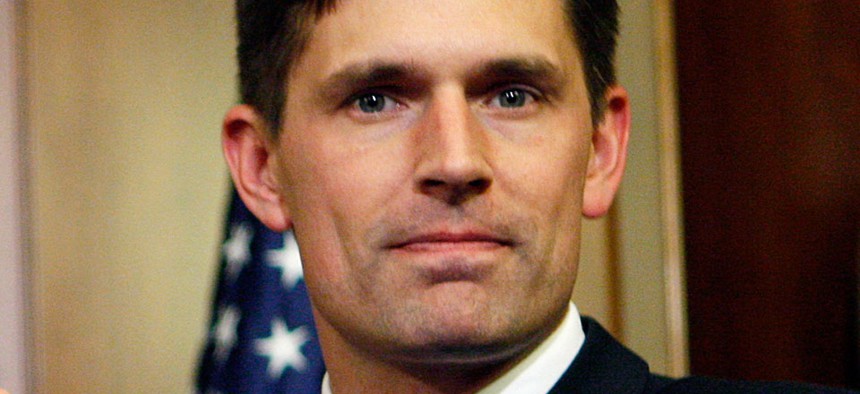New Mexico Senators Differ Over White Sands Transmission Line

Sen. Martin Heinrich, D-N.M Charles Dharapak/AP File Photo
Heinrich backs the wind-energy project; Udall has asked President Obama to step in.
New Mexico’s two Democratic U.S. senators differ over plans to run a power transmission line through White Sands Missile Range test areas.
Junior U.S. Sen. Martin Heinrich strongly backs development of the line as “vital” to the state’s economy. Sen. Tom Udall, meanwhile, has urged presidential intervention to resolve differences between the Defense Department, which opposes the plan, and the Bureau of Land Management, which selected the route.
In an Aug. 19 letter to Interior Department Secretary Sally Jewell, Heinrich blasted the Pentagon for its continued delay of the project by first agreeing to and then backing off proposed routes for the line across the missile range.
BLM has since 2009 overseen the right-of-way process for the $1.5 billion, 515 mile, 500 kV transmission line planned by SunZia LLC to link wind-power generating sites in rural New Mexico with Arizona. On June 14, the bureau selected a route that crosses the northern extension of the missile range -- a route opposed by the Pentagon on national security grounds because it would interfere with missile tests.
Heinrich told Jewell that successful development of transmission projects like SunZia's are vital to the state's economy and job creation.
SunZia has positioned its proposed line as a way to transmit “green” energy generated by wind turbines in rural, eastern New Mexico to urban markets in Arizona and possibly California. Heinrich agreed: “The SunZia transmission line will help deliver wind and solar energy generated in New Mexico to the major western energy demand centers,” he said. “Without access to those markets, New Mexico's renewable energy resources will remain isolated and largely untapped.”
Heinrich said Defense first agreed to a route across the missile range in May 2011, then later asked BLM to push the line further north. This month the Pentagon suggested SunZia bury 35 miles of the line that cross the range at a cost of $350 million. Heinrich, in his letter, questioned whether any route selected by BLM would satisfy Defense. “Moreover, DoD and WSMR have not yet provided any assurances that the route that they currently prefer will still be acceptable to them at any time in the future,” he wrote.
He told Jewell that if SunZia walks away from its planned project due to further delays in route approval, “it will significantly damage New Mexico's prospects for large-scale renewable energy development. Without the ability to sell wind and solar energy outside the state, the demand for commercial scale renewable energy development will remain low.”
Udall, in an Aug. 16 interview with the Albuquerque Journal suggested that President Obama may need to intervene to resolve the differences between BLM and Defense. “When we have two agencies that disagree like this, the White House needs to try to crack some heads to find a solution,” Udall told the Journal. Without transmission projects like SunZia, New Mexico will lose out to other states that are developing renewable resources, Udall said.
Jennifer Talhelm, a Udall spokeswoman, told Nextgov that the Senator believes that New Mexico’s "unimpeded airspace and its abundant sun and wind" should be used to help the state create jobs and economic opportunity.
“At the end of the day, this is a conflict between two divisions of the administration,” she said, “and Sen. Udall believes the White House should step in and resolve the issue in a way that fully protects the important missions of WSMR and still allows for renewable energy transmission, which is essential for New Mexico to compete with its surrounding states in clean energy production. He has called on the administration to find a workable solution as soon as possible.”
Rep. Steve Pearce, R-N.M., whose district includes the missile range, has backed development of the SunZia line as long as it does not interfere with test operations. “I hope SunZia recognizes how damaging their proposed route will be to national security,” he has said, urging the company to alter the route.



